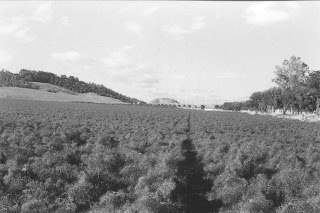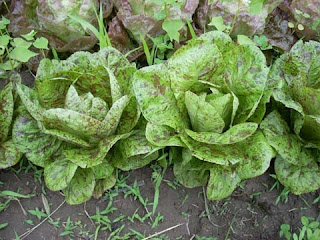One of my favorite vegetables is the onion. I think it is the aroma of a freshly harvested onion that I especially like. It is this reason, more than its sometimes strong taste, that makes onions one of the aromatic vegetables.
Some onion varieties are very unique, matched perfectly to the areas they are grown in. In the
Brought to the Italian mainland by the Phoenicians over 2,000 years ago, their unique torpedo shape and sharp sweet flavor remains with us today. The Fair Share Farm version of the Tropea onion includes the lunga (torpedo-shaped one) and the tonda (round), the latter perhaps being the sweeter of the two.
One of its traditional uses is as a marmalade. We saved a jar of marmalade we bought in Tropea in December to use as a benchmark for making our own. The recipe below is our first attempt, based on several sources on the web. We will try it next time with more sugar (to make it thicker) and some herbs (thyme, summer savory and rosemary). Serve it as a garnish over meat or grilled vegetables.
Tropea Onion Marmalade
1 tbsp olive oil
1 tbsp butter
2 heaping cups chopped Tropea onions
2 tbsp turbanado or brown sugar
2 tbsp red wine vinegar
2 tbsp balsamic vinegar
Chop the onion and cook with the olive oil and butter over medium high heat for 3 minutes, stirring often. Turn heat to low and let cook for 1 hour, stirring every 10 minutes or so. Add the sugar and vinegar and cook over medium heat for 15 to 20 minutes, or until the mixture thickens up.
NEED TO KNOW MORE? Go to our Recipe page and search.
Bulk List Items for the Week of July 7, 2008
| Item Beets |
Member cost $2.75/qt |
Non-Member $3.00/qt |
| Basil | $1.75/bu | $2.00/bu |
| Summer squash-lg Summer sq-med Summer sq-small Parsley |
$1.00 ea $0.50 ea $3.00/qt $1.75/bu |
$1.50 ea $0.75 ea $3.50/qt $2.00/bu |
| Oregano | $1.75/bu | $2.00/bu |
| Dill flowers | $1.75/bu | $2.00/bu |
| Dried herbs | $1.75/tin | $2.00/tin |
| thyme, marjoram, dried hot peppers, lovage, lavendar flowers, coriander, oregano |








